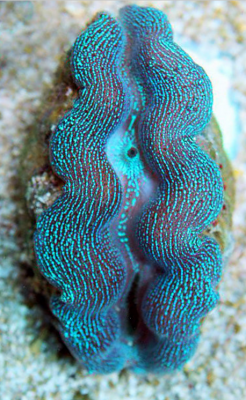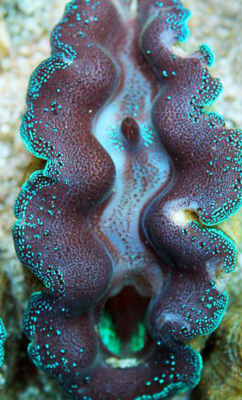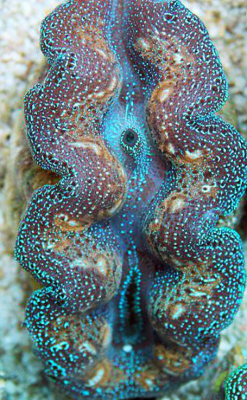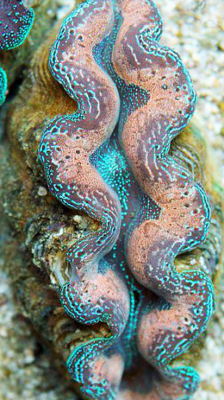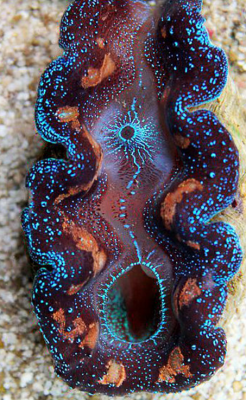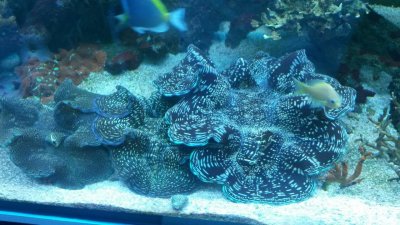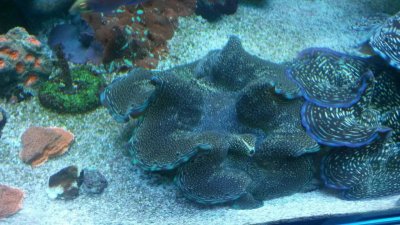Hippopus, hippopus
Appearance: The shell is rounded with folds, without the predominate scutes found on Tridacna. Mantle coloration varies from different hues of blue, green, brown or olive, with lighter striation makings. Prominent blue eyes spots can be seen on the margins of the mantle. The mantle reaches the margins of the shell, the mantle does not drape the shell as seen in other larger clams such as Crocea and Maxima. This is a broad larger clam growing to a reported 50 cm. The clam's size and wide base allows the clam to stay upright without having to attach to substrate or rock work.
Natural History: Western Pacific Ocean, found at depths up to 20 ft on sandy substrate or beds of sea grass. This clam is still harvested for it's meat in some Indo-Pacific regions.
Aquarium Care: Intense lighting provided by metal halide, LED or multiple bulb T5HO fixtures is required. Because of the size of this clam the sand bed it your best option for placement unless you can provide a large stable platform that the clam can not fall from.
Moderate to lower flow rates. The clam easily moves about, using it's foot to find just the right angle to the flow.
Calcium: 350-450
Alk: 8-12 dkh
Magnesium: 1250-1350 ppm.
SG: 1.024-.027.
Temp: 78-83 F.
Supplementation of trace elements is essential to maintain consistent levels. Initially smaller specimens may only require routine water changes, but as the clam grows it will become necessary to replace calcium, magnesium and maintain alkalinity.
My display nitrates run around 10 ppm on an average, with phosphates as high as .05 ppm.
Nutrition is provided via photosynthesis by symbiotic zooxanthellae, the zooxanthellae produce carbohydrates. The belief that giant clams utilize DOC (dissolved organic carbon) within home aquariums is widely accepted. The use of phytoplankton is still up for debate, supplementation of phytoplankton may be of benefit to smaller specimens.
Impression: H. Hipppopus may not be the stunner that other larger clam are, with the rainbow of colors, but it's an attractive addition to the aquarium. Care is comparable to the larger Tridacna types like Derasa, Squamosa, Gigas. As mentioned previously this clam will move about freely using it's foot. Mine clam can move up to 2 inches a day, making the sand bed optimal placement.
Last edited:






